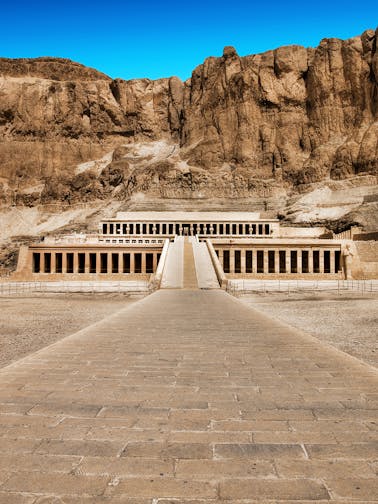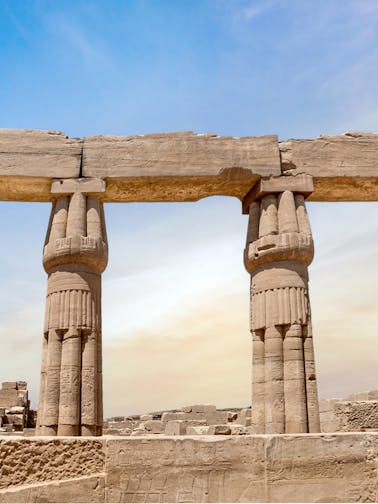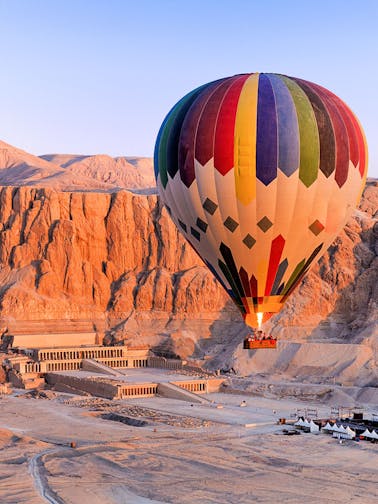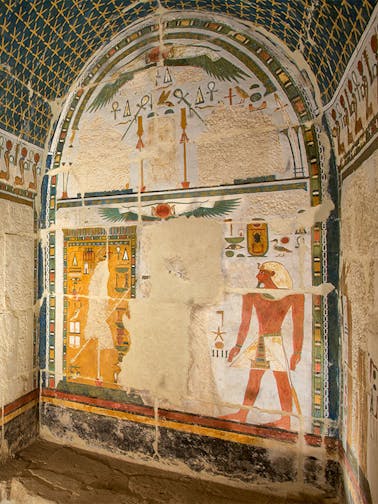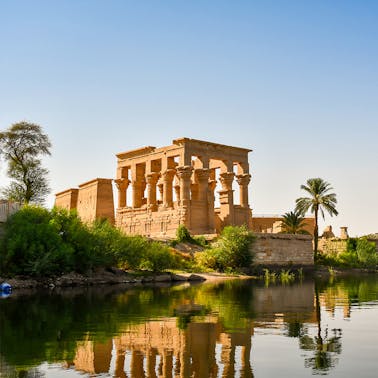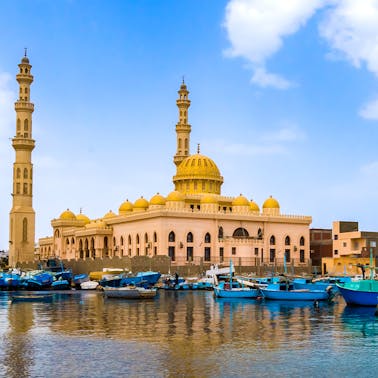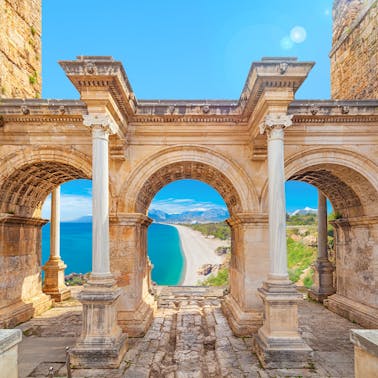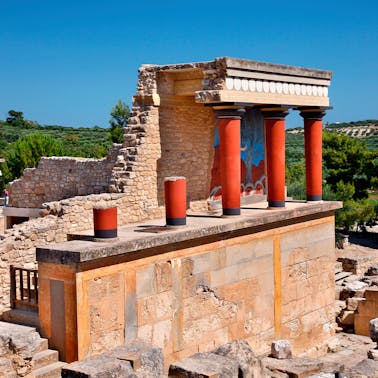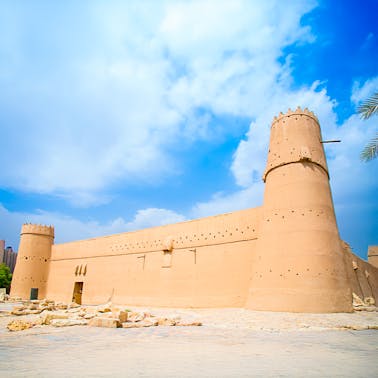Luxor Temple Tickets & Tours
Discover the timeless beauty of Luxor Temple. Explore towering statues, ancient obelisks, and intricate hieroglyphics as you walk through the Hypostyle Hall and the Avenue of Sphinxes—unveiling the secrets of Egypt’s glorious past.
42M+ travellers love us
Delivering best in class experience
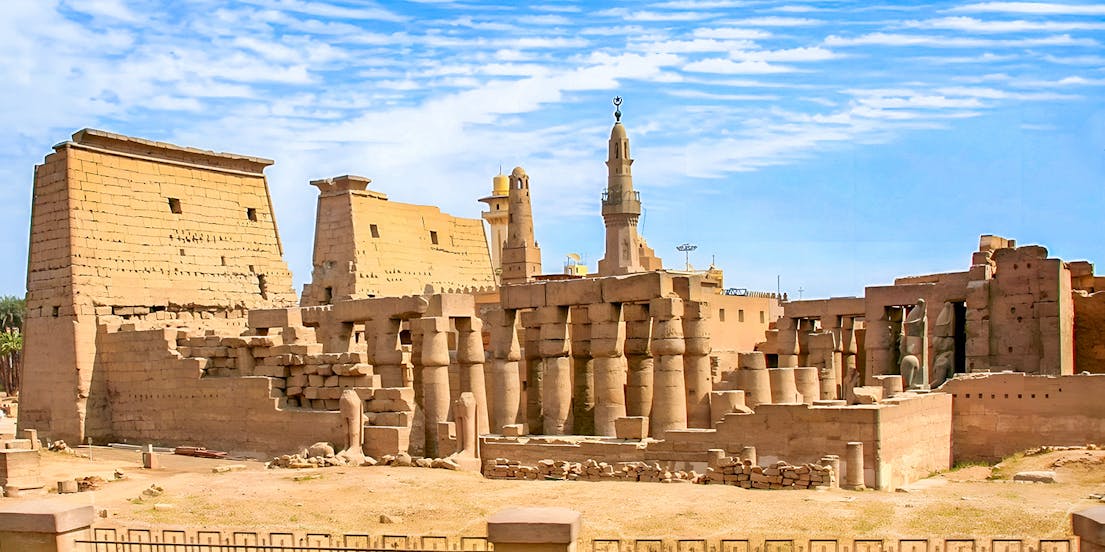
- Start your Luxor Temple adventure right away with skip-the-line access—no long queues!
- Begin your journey at the Avenue of the Sphinxes, a sacred road used during the Opet festival, a symbolic reenactment of the marriage of Amun and Mut, where statues of the gods were paraded along it.
- Enjoy the freedom to wander the temple complex as you like, making the most of this unforgettable experience.
- Did you know that a large part of the Luxor Temple was buried under sand for centuries until its excavation in the late 19th century.
More details
- Start your Luxor Temple adventure right away with skip-the-line access—no long queues!
- Begin your journey at the Avenue of the Sphinxes, a sacred road used during the Opet festival, a symbolic reenactment of the marriage of Amun and Mut, where statues of the gods were paraded along it.
- Enjoy the freedom to wander the temple complex as you like, making the most of this unforgettable experience.
- Did you know that a large part of the Luxor Temple was buried under sand for centuries until its excavation in the late 19th century.
- Explore Karnak Temple at your own pace, packed with historical insights and hidden stories waiting to be discovered.
- Start at the First Pylon, where you'll learn about the myths of Amun-Re, Mut, and Khonsu, central deities of Thebes.
- Navigate Karnak’s wonders, from the Hypostyle Hall’s 134 magnificent columns to the serene Sacred Lake, using offline maps for a seamless experience.
- Fast-track your entry to Karnak Temple with an upgraded ticket, skipping the long lines for a smoother, stress-free visit.
- Did you know? The Karnak Temple holds Egypt’s tallest surviving obelisk, commissioned by Queen Hatshepsut, standing 29.5 meters (97 feet) high.
More details
- Explore Karnak Temple at your own pace, packed with historical insights and hidden stories waiting to be discovered.
- Start at the First Pylon, where you'll learn about the myths of Amun-Re, Mut, and Khonsu, central deities of Thebes.
- Navigate Karnak’s wonders, from the Hypostyle Hall’s 134 magnificent columns to the serene Sacred Lake, using offline maps for a seamless experience.
- Fast-track your entry to Karnak Temple with an upgraded ticket, skipping the long lines for a smoother, stress-free visit.
- Did you know? The Karnak Temple holds Egypt’s tallest surviving obelisk, commissioned by Queen Hatshepsut, standing 29.5 meters (97 feet) high.
-
Skip the line entry to the Luxor and Karnak Temples.
-
Begin your Luxor Temple visit at the Avenue of Sphinxes, the Opet festival's sacred processional route for Amun and Mut.
-
Discover Karnak Temple's history and hidden stories at your own pace, from the First Pylon's myths to the grand Hypostyle Hall and serene Sacred Lake, using offline maps.
More details
-
Skip the line entry to the Luxor and Karnak Temples.
-
Begin your Luxor Temple visit at the Avenue of Sphinxes, the Opet festival's sacred processional route for Amun and Mut.
-
Discover Karnak Temple's history and hidden stories at your own pace, from the First Pylon's myths to the grand Hypostyle Hall and serene Sacred Lake, using offline maps.
-
Full-day tour from Hurghada to Luxor’s ancient sites with a multilingual Egyptologist guide. Entrance tickets at each site are not included and must be bought on-site.
-
Visit the Valley of the Kings, home to 63 royal tombs, and stop for lunch at a local restaurant.
-
See Karnak Temple and the Colossi of Memnon.
-
Visit the Temple of Queen Hatshepsut, a ruler who broke tradition by depicting herself as male.
-
Fun fact: the Valley of the Kings was created to protect pharaohs’ tombs from robbers.
More details
-
Full-day tour from Hurghada to Luxor’s ancient sites with a multilingual Egyptologist guide. Entrance tickets at each site are not included and must be bought on-site.
-
Visit the Valley of the Kings, home to 63 royal tombs, and stop for lunch at a local restaurant.
-
See Karnak Temple and the Colossi of Memnon.
-
Visit the Temple of Queen Hatshepsut, a ruler who broke tradition by depicting herself as male.
-
Fun fact: the Valley of the Kings was created to protect pharaohs’ tombs from robbers.
10% off
Similar things to do in Luxor
Nearby cities to explore

























